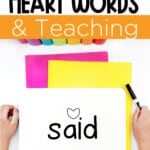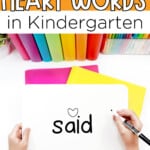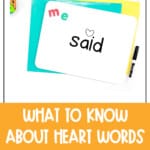


Learn how to use a science-based approach to teaching high-frequency words called “heart words”.
Early in my teaching career, I can remember telling parents to practice high-frequency words at home. I told them to make flashcards and practice, practice, practice. I often explained that these words had “tricky parts” in them and that some of the words just needed to be memorized. When I think back to those conferences now, I cringe. That was not the best way for me to model how to teach high-frequency words.
Current research tells us that high-frequency words do not just need to be memorized. Research says that these words are like all other words we encounter and have some degree of decodability to them. Yes, a lot of them also have irregular spellings and sounds. But we must teach those parts to our students! We need to show them the decodable parts and explain the irregular parts of the word. This helps connect what we are teaching in phonics to reading.
Have you recently heard the term “heart words” being used with high-frequency word instruction? Do you know what this word means? If not, or if you don’t feel confident, we’ll dive into “heart words” and best practices for teaching high-frequency words to our students.
The term “heart words” is everywhere right now in the reading community. Heart words are high-frequency words with irregular spelling. They are called “heart words” because part of the word will have to be learned to be read and spelled by heart. Examples of common heart words are: said, you, and where. We must spell by “heart” only part of the word- the part of the word that is irregular.
We don’t want to fall into the habit of just calling high-frequency words “heart words”.
We also don’t want to teach students to just memorize these words. When we ask students and parents to just memorize these words, we are separating phonics knowledge and skills from them. We need to ask ourselves what parts of the word is decodable and what phonics skills can be modeled and taught from this high-frequency word.
In our high-frequency word instruction, we want to make sure we are explicitly teaching students the phonics rules behind the words.
You can also use orthographic mapping to help. A lot of high-frequency words are decodable to some degree. For example: can, did, and but are completely decodable if students have knowledge of CVC words. It’s imperative that we show and model the decodable parts of the word as well as any irregular parts.
The irregular part of the word is what we call the “heart word” part. Let’s use the word “said” as an example. In the word “said” the first sound /s/ and the last sound /d/ are decodable because the letters are making their most common sound. The irregular part of the word or the “heart word” part is the “ai” making the short e sound. We want to explicitly teach students that in this word the letters “ai” are making a different sound than what we would expect them to. We have to remember in this word they make the short e sound.
Teaching and showing students the decodable parts and the irregular parts of high-frequency words helps connect these words to the important phonics work we are doing in the classroom.
What about you, friend? How are you teaching high-frequency words to your students? Do you use heart words? I’d love to hear your thoughts in the comments!
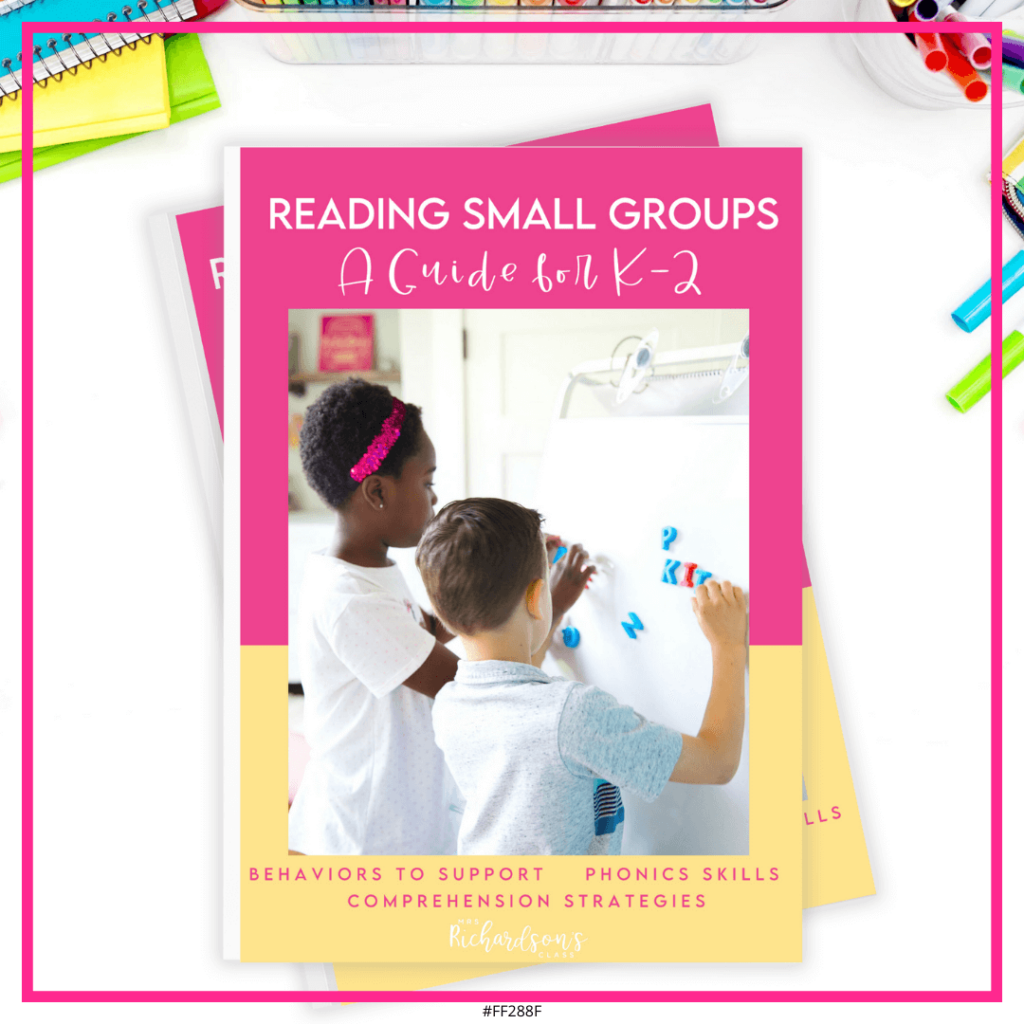
Want to use the latest research to boost your readers during small groups? This FREE guide is packed with engaging ideas to help them grow!
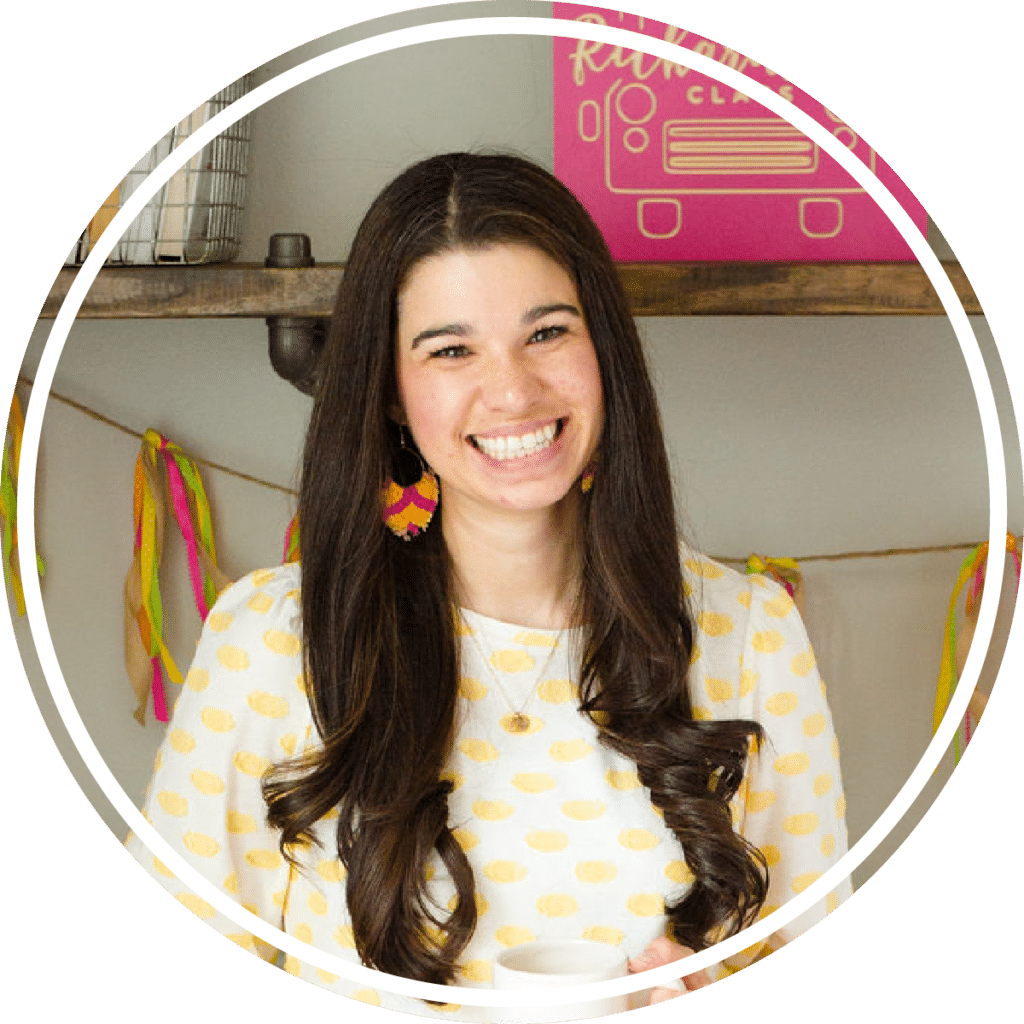
I’m a K-1 teacher who is passionate about making lessons your students love and that are easy to implement for teachers. Helping teachers like you navigate their way through their literacy block brings me great joy. I am a lifelong learner who loves staying on top of current literacy learning and practices. Here, you’ll find the tools you need to move your K-2 students forward!


| Cookie | Duration | Description |
|---|---|---|
| cookielawinfo-checkbox-analytics | 11 months | This cookie is set by GDPR Cookie Consent plugin. The cookie is used to store the user consent for the cookies in the category "Analytics". |
| cookielawinfo-checkbox-functional | 11 months | The cookie is set by GDPR cookie consent to record the user consent for the cookies in the category "Functional". |
| cookielawinfo-checkbox-necessary | 11 months | This cookie is set by GDPR Cookie Consent plugin. The cookies is used to store the user consent for the cookies in the category "Necessary". |
| cookielawinfo-checkbox-others | 11 months | This cookie is set by GDPR Cookie Consent plugin. The cookie is used to store the user consent for the cookies in the category "Other. |
| cookielawinfo-checkbox-performance | 11 months | This cookie is set by GDPR Cookie Consent plugin. The cookie is used to store the user consent for the cookies in the category "Performance". |
| viewed_cookie_policy | 11 months | The cookie is set by the GDPR Cookie Consent plugin and is used to store whether or not user has consented to the use of cookies. It does not store any personal data. |
